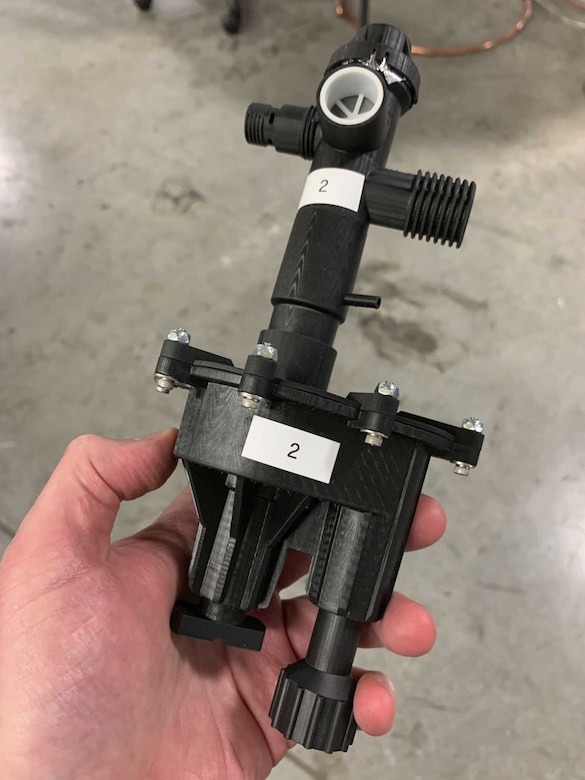May 11, 2020 | BY David Vergun , DOD News
Developers from the Army Research Laboratory are
collaborating with civilian partners to manufacture low-cost, emergency
ventilators using 3D printers.
The handheld gas ventilator, dubbed the Illinois RapidVent,
is roughly the size of a water bottle. Due to its size and portability, the
ventilator may also be ideal for soldiers in battle beyond the COVID-19
pandemic, said Tonghun Lee, a Champaign, Illinois-based ARL researcher.
Also, airmen at Goodfellow Air Force Base, Texas, are using
a 3D printer to create N95 surgical masks.
The Defense Department has used 3D printing for a variety of
projects for years, including:
- Engineers at Aberdeen Proving Ground, Maryland, produced replacement parts for unmanned aerial and ground vehicles and weapons systems, such as components for a 40 mm grenade launcher, as early as 2014.
- Army researchers at Picatinny Arsenal, New Jersey, produced a turret for an M1A1 Abrams tank several years ago, a process normally requiring a giant lathe.
- A 3D printer produces a computer-aided design.
- Technicians at the Rapid Prototype Lab at Norfolk Naval Shipyard in Virginia made mockups of parts for aircraft carriers, which would have taken more time and labor than using traditional materials of wood or metal.
- The Navy's Fleet Readiness Center Southeast at Naval Air Station Jacksonville, Florida, developed an enhanced hydraulic intake manifold for the V-22 Osprey aircraft. It was 70 percent lighter, had improved fluid flow and fewer leak points than its traditionally-manufactured counterpart.
- A technician shows a 3D-printed part for a small aircraft.
- Walter Reed National Military Medical Center in Maryland, produces medical parts, including custom-made cranial plate implants, medical tooling and surgical guides.
- Technicians at Travis Air Force Base, California, create nonstructural aircraft components.
- Marines at Camp Pendleton, California, fabricated a concrete footbridge in December 2018.
First, a computer-aided design — dubbed CAD — of the object
to be fabricated is made using software and a computer. Then, the CAD software
is connected to a 3D printer, and the part is printed layer by layer in a
process called additive manufacturing. There are many types of 3D printers.
Some can make plastic parts and others can make parts of various types of
metals, rubber and many other materials.The concept of 3D printing started in
the 1970s, but its development and deployment really took off during the next
two decades. Prior to 3D printing, parts were cast, forged, milled, turned or
stamped in a press. Many parts are still made that way.
Two big advantages of 3D printing are that it is quicker
than older methods of production that require time-consuming and costly
retooling to turn out a modified part, and 3D printing also allows complex
parts to be manufactured that might be difficult to produce using other
methods.
Also, lightweight 3D printers can be located on or near the
battlefield, alleviating costly delays in ordering parts shipped from thousands
of miles away. For example, the Army's Rapid Equipping Force has been deploying
3D printers to Afghanistan since 2014 to assist soldiers with rapid solutions
to part and equipment issues. The Navy even deploys 3D printers on ships.








No comments:
Post a Comment